Skagen Falster 3 Review
Skagen Falster 3 Review
Skagen's third iteration of the Falster smartwatch will attract the eye for the right reasons
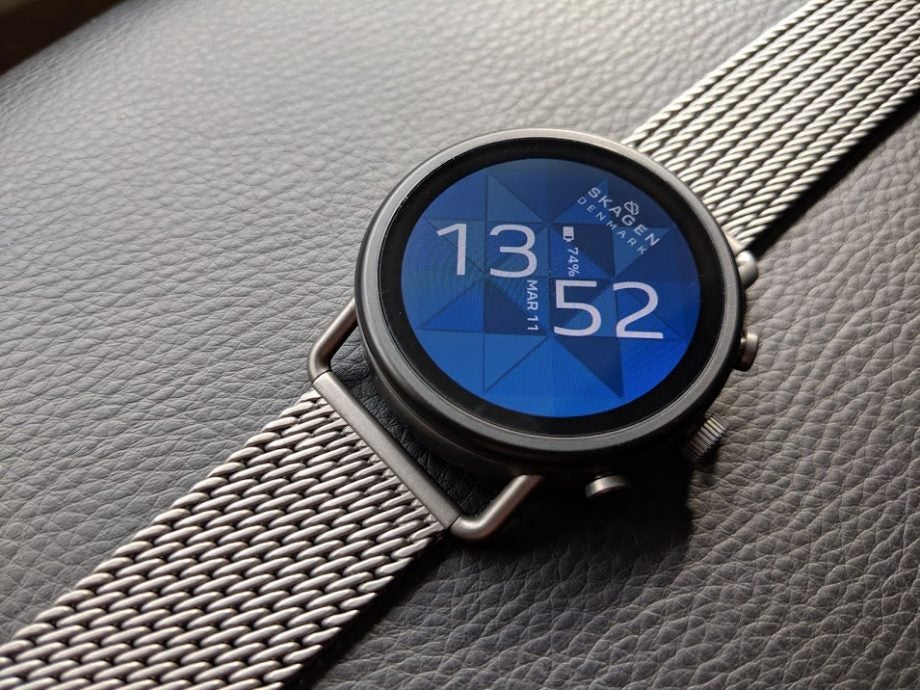
Verdict
Boasting near-identical specs to the already superb Fossil Gen 5 smartwatch, the Falster 3 is a win for Skagen. It comes packing the best of what Wear OS has to offer in one of the nicest designs I've ever seen for a smartwatch.
Pros
- Gorgeous, eye-catching design
- Improved battery life
- Fast performance
Cons
- Dull exclusive watch faces
- Re-sizing can be a pain
Key Specifications
- Review Price: £279
- Water-resistant up to 3ATM
- 8GB internal storage
- Qualcomm Snapdragon Wear 3100 chipset
- Wear OS
- 42mm case size
- 22mm watch strap
- Untethered GPS
- NFC
While the Falster 3 might only be Skagen’s third attempt at a mainstream smartwatch, it’s by no means the third in a long line of countless smartwatches produced with the help of fashion label, Fossil.
Following last year’s release of Fossil’s own brand Gen 5 smartwatch, which boasted updated specs and a bunch of new features (particularly where battery life is concerned), the Falster 3 has taken its cue almost directly from Fossil’s mainline counterpart, with the only obvious difference being Skagen’s use of industrial gunmetal for the chassis and watch strap.
Retailing at the same initial price as the Fossil Gen 5 (which can now be found with a sizeable discount from certain retailers), the key question here is whether or not the Falster 3 is worthy of your hard-earned cash over Fossil’s device. For the fashion-conscious out there, I’d say yes – but there are a few details that could sway you.
Design – The Skagen Falster 3 is the best-looking Wear OS watch to date
I’m glad that we get to address the Falster 3’s design right off the bat because it is, by far, my favourite aspect of Skagen’s timepiece. While there are several styles available, we were sent the gunmetal option for review, with a 42mm body comprised of stainless steel and a complementing 22mm watch strap utilising stainless steel mesh. With so much metal on board, the Falster 3 sounds like it could be a heavy timepiece, but I found it to be less so than, say, a traditional men’s analogue watch.
In fact, I was initially concerned about the breathability of the whole thing, particularly when wearing the watch out on a run or down the gym. Luckily, Skagen’s novel idea of having two handlebars in place to distance the connecting watch strap from the smartwatch itself means that plenty of air can pass through, preventing the device from sticking to my wrist.
The handlebars also do a great job of framing the watch itself, drawing your eye to its design. It’s a slight shame then that despite its stellar design upfront, the Falster 3 takes a few steps back where the buckle is concerned.
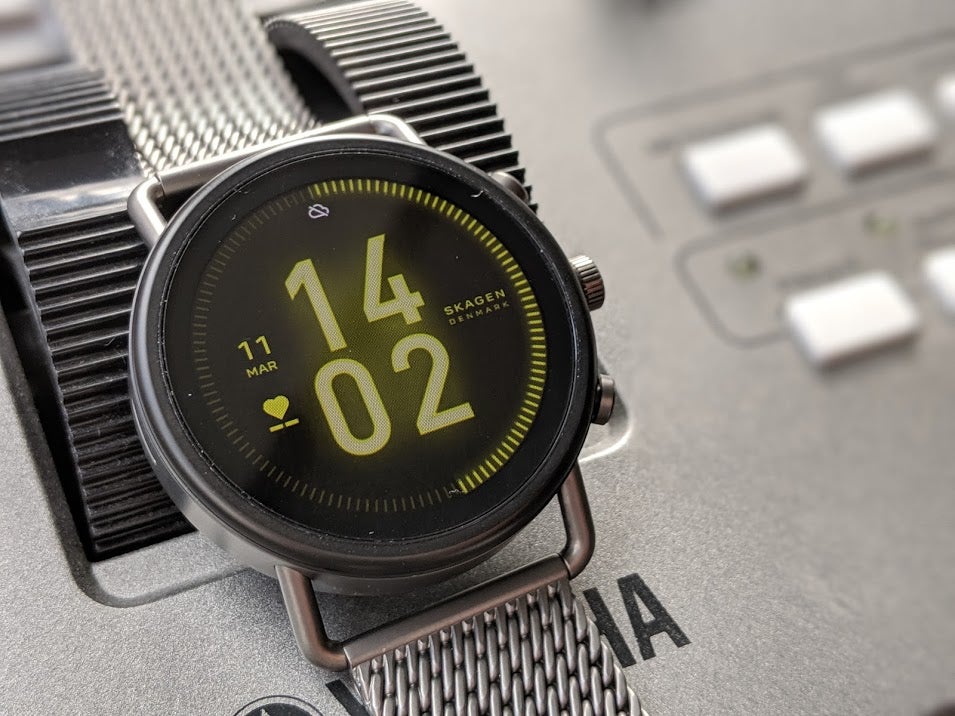
Now, there’s no denying that the safety mesh buckle on the Falster 3 does follow the same minimalist aesthetic as the rest of the watch, but that continuity doesn’t account for much when, in practice, the buckle proves to be incredibly fiddly in the early days of use.
Even once you become familiar with its design, the buckle never eases up in its difficult resizing process. There are no prongs, loops or magnets in play, so you can’t simply readjust the size of the Falster 3’s watch strap on the fly. No, this requires at least one tool and accompanying military precision.
Trying to readjust the Falster 3’s watch strap to fit my wrist took no less than four attempts before I found a length that was comfortable, but the whole process left me feeling desperate for a Milanese loop.
Screen – Up there with the Fossil Gen 5
Much like the internals that power it, the Skagen Falster 3 has a near-identical display to the Fossil Gen 5. Both watches feature a 328ppi AMOLED display, allowing for crisp and easy-to-read text, alongside smooth animations when scrolling through menus or viewing dynamic watch faces.
Now that Wear OS watches have unanimously adopted higher-resolution rates, displays are no longer a point of ire; they put contenders such as the Falster 3 in a better light against the Apple Watch.
However, one point that’s definitely worth mentioning is that there’s still a bit of work to do where standby screens are concerned. Trying to read real-time statistics during a run was a near-impossible task without waking the watch. Admittedly, some of the bolder standby watch faces are easier to read in direct sunlight than others, but it was a consistent issue during my time with the Falster 3.
Features and performance – The Skagen Falster 3 packs the latest Wear OS software and hardware
One of my biggest hang-ups with the last generation of Wear OS smartwatches was that the Snapdragon Wear 2100 processor just wasn’t up to the task of delivering a seamless user experience, with moments of slowdown fairly common. Some devices, such as the Michael Kors Access Runway, were still using the Snapdragon 2100 late into its life-cycle, even though the newer and vastly improved Snapdragon Wear 3100 had hit the market.
Now that the Snapdragon 3100 has been adopted as standard, the difference is night and day. Scrolling through menus is a breeze, apps are speedy to load, and there are no major instances of slowdown.
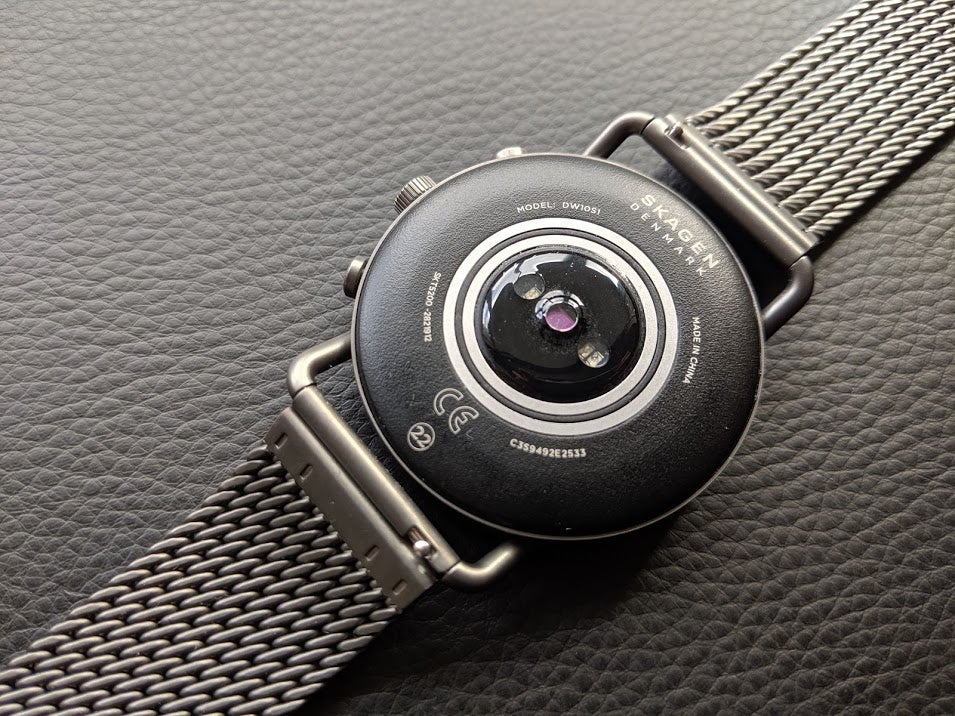
You have NFC compatibility for Google Pay, active heart rate monitoring, water-resistance by up to 30 meters, and untethered GPS tracking.
The Falster 3 has even carried over the new battery life features from the Fossil Gen 5, which are split into four distinct modes: Daily, Extended, Custom and Time Only. The benefits of each mode are fairly self-explanatory, although I found myself utilising the Custom option more than the rest, just for the sake of flexibility.
As with the the majority of these Fossil-produced smartwatches, the only major difference – outside of their design – are the exclusive watch faces loaded on to each device. Given how much Skagen has nailed the aesthetic of the Falster 3, I have to say that I’m disappointed by the blandness of the Falster 3’s exclusive watch faces.
Despite the fact that you can customise these watch faces to feature any number of wacky colour combinations, there’s no getting around the fact that, at their core, they’re just downright boring. The case could be made that their minimalist approach complements the Falster 3’s metallic design, but it seems more like an oversight to me.
Then you have the fact that a near-£300 smartwatch is still bundled with a charging cable that feels as though it’s fallen straight off Primark’s production line. Actually, I take that back: even Primark would put out a more robust cable than what’s packaged with the Falster 3 – and all other Wear OS watches, for that matter.
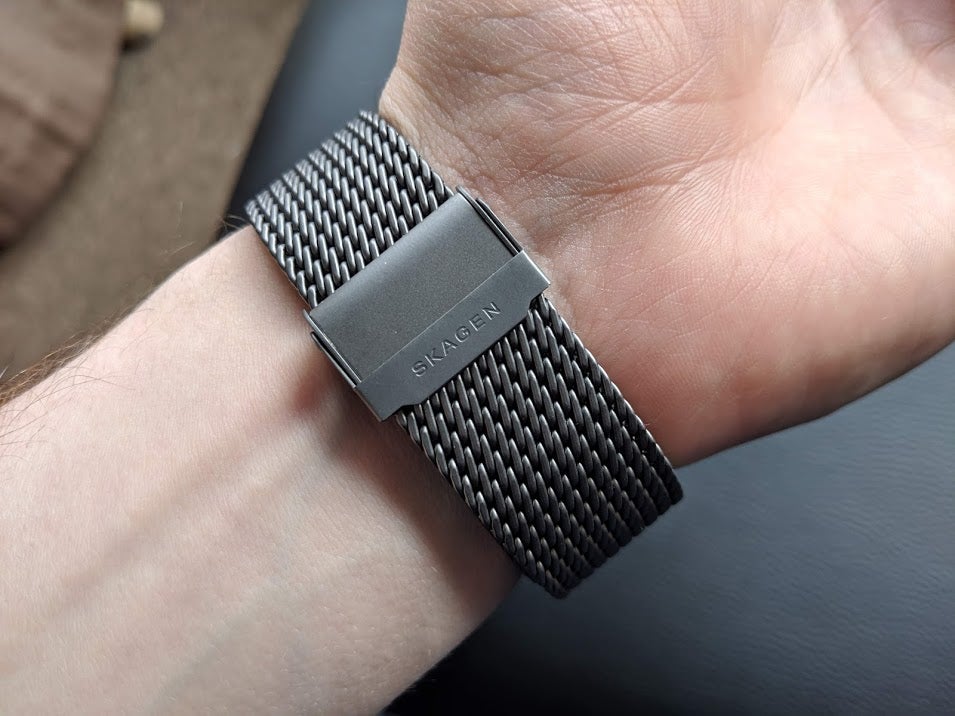
Fitness tracking – A fine attempt but still not a patch on Garmin
Having spent the past few months wearing the Garmin Venu as my primary smartwatch, I was expecting my return to Google Fit to feel like something of a downgrade. After all, Garmin has long since established itself as the go-to brand for fitness fanatics. However, the shift wasn’t anywhere near as jarring as expected.
In fact, I’d go as far as to say that Google Fit has a much more intuitive interface than Garmin’s devices. For example, during a weightlifting session, Google Fit’s streamlined UI meant that keeping track of weights, reps, and adding new exercises on the fly was a breeze. Sure, there are nowhere near as many exercises baked into the Falster 3 are there are in the Garmin Venu, but it can get the job done.
When it comes to weightlifting specifically, however, smartwatches in general still have some way to go to improve automatic rep tracking. With the Falster 3, some sets were recorded perfectly whilst others were barely recognised.
Of course, most people will only be interested in tracking running, and in that regard the Falster 3 delivers on the whole. The watch boasts untethered GPS, so there’s no need to take your phone with you when you’re out on a run – and, to my surprise, the feature was just as speedy to connect as the Garmin Venu in some instances.
On the whole, GPS tracking worked as intended, but there were some minor instances where the corresponding satellite seemed to think that I was a street away from where I was actually running. At one point, I even achieved a miracle by running on the Thames itself.
If Google Fit just isn’t your cup of tea, then you can always swap to a different fitness tracking app entirely. There is compatibility available for LifeSum, GymRun and Strava, to name a few.
It’s also worth noting that – despite what initial appearances might imply – the Falster 3 isn’t an uncomfortable watch to wear during a workout. In fact, the aforementioned handlebars at the top and the bottom of the watch allow air to get to your wrist, while the watch itself is just light enough to avoid becoming a burden.
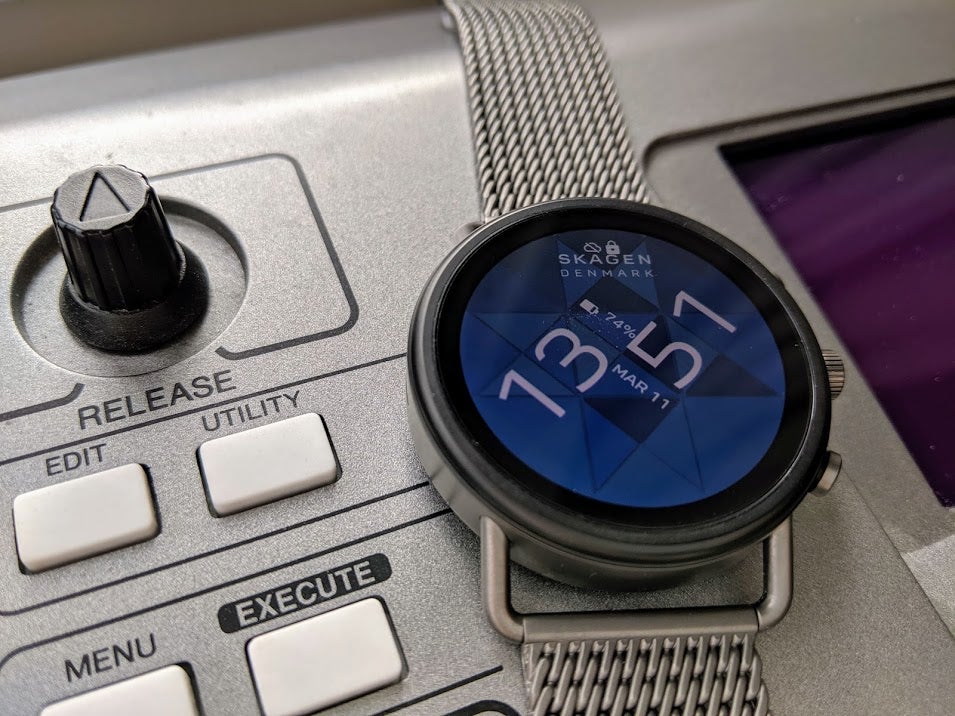
Battery life – A huge improvement where it counts
One of the biggest improvements brought about by the Fossil Gen 5 was noticeably better battery performance. This was due to the implementation of several battery modes, and the ability to customise those modes to suit your lifestyle. This same update has been carried over to the Falster 3, making the Wear OS experience better than it’s ever been.
By default, the watch is set to Custom mode, which makes use of some of the watch’s main features such as NFC, location tracking and an always-on screen. It switches off the more audacious aspects, such as constant voice detection and phone audio. On a typical day with Custom mode switched on, receiving a handful of notifications and tracking a single workout, I was able to end the day with 53% still left in the tank – plenty, if you want to continue wearing the watch for sleep tracking.
However, switching over to Extended mode can get you even more mileage for your money. Over a 10-hour period, with minimal notifications, the battery dropped to only 82% from a full charge. The following day was mostly spent in a cinema (don’t judge), so do-not-disturb was switched on to avoid notifications, seeing only a slight dip to 59% after nearly 14 hours. It isn’t the best way to make the most of the Falster 3’s features, but it’s nice to know that its battery life can go above and beyond when you need it to.
The only major point to note is that, if you’re looking for a smartwatch that can go the distance and match your pace during a marathon, the Falster 3 isn’t it. A quick 26-minute run with untethered GPS took 16% off a full charge. On heavier days that included longer runs, the battery would drop to just under 50% by the time lunch came around. For a proper marathon companion, you’d be better off with the Garmin Venu or the Garmin Vivoactive 4.
Should you buy the Skagen Falster 3?
Adopting the momentum started by the Fossil Gen 5 smartwatch, Wear OS watches finally feel as though they’re hitting their stride, and the Skagen Falster 3 is evident of this. It’s feature packed, boasts a noticeably improved battery life, and also happens to be the most attractive Wear OS watch I’ve seen to date.
If you’re a fan of the Falster 3’s design – and money is no option – then it’s an easy recommendation over the Fossil Gen 5; it will set you back a bit more, but it’s worth it for the added flush. As a fitness watch, however, it certainly makes admirable strides in user interface and GPS tracking, but there’s a long way to go for Google Fit to hit Garmin where it counts.


